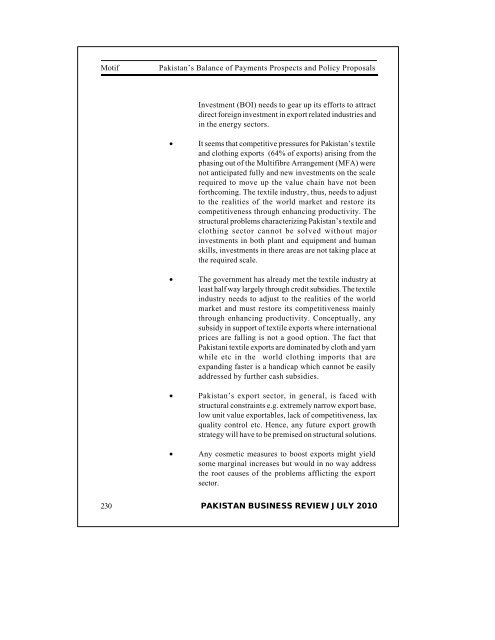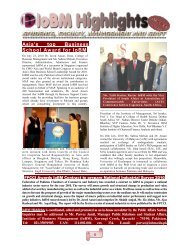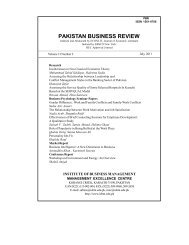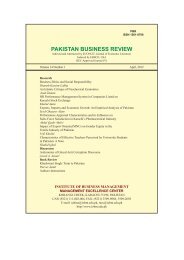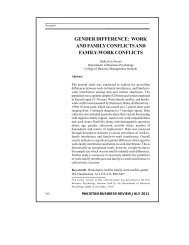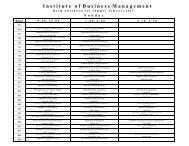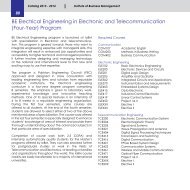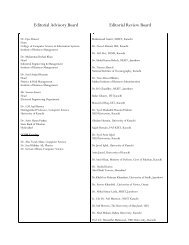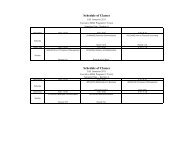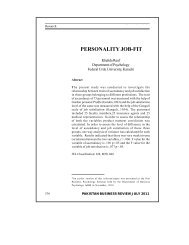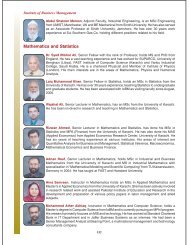Complete Volume - Institute of Business Management
Complete Volume - Institute of Business Management
Complete Volume - Institute of Business Management
You also want an ePaper? Increase the reach of your titles
YUMPU automatically turns print PDFs into web optimized ePapers that Google loves.
Motif<br />
Pakistan’s Balance <strong>of</strong> Payments Prospects and Policy Proposals<br />
Investment (BOI) needs to gear up its efforts to attract<br />
direct foreign investment in export related industries and<br />
in the energy sectors.<br />
• It seems that competitive pressures for Pakistan’s textile<br />
and clothing exports (64% <strong>of</strong> exports) arising from the<br />
phasing out <strong>of</strong> the Multifibre Arrangement (MFA) were<br />
not anticipated fully and new investments on the scale<br />
required to move up the value chain have not been<br />
forthcoming. The textile industry, thus, needs to adjust<br />
to the realities <strong>of</strong> the world market and restore its<br />
competitiveness through enhancing productivity. The<br />
structural problems characterizing Pakistan’s textile and<br />
clothing sector cannot be solved without major<br />
investments in both plant and equipment and human<br />
skills, investments in there areas are not taking place at<br />
the required scale.<br />
• The government has already met the textile industry at<br />
least half way largely through credit subsidies. The textile<br />
industry needs to adjust to the realities <strong>of</strong> the world<br />
market and must restore its competitiveness mainly<br />
through enhancing productivity. Conceptually, any<br />
subsidy in support <strong>of</strong> textile exports where international<br />
prices are falling is not a good option. The fact that<br />
Pakistani textile exports are dominated by cloth and yarn<br />
while etc in the world clothing imports that are<br />
expanding faster is a handicap which cannot be easily<br />
addressed by further cash subsidies.<br />
• Pakistan’s export sector, in general, is faced with<br />
structural constraints e.g. extremely narrow export base,<br />
low unit value exportables, lack <strong>of</strong> competitiveness, lax<br />
quality control etc. Hence, any future export growth<br />
strategy will have to be premised on structural solutions.<br />
• Any cosmetic measures to boost exports might yield<br />
some marginal increases but would in no way address<br />
the root causes <strong>of</strong> the problems afflicting the export<br />
sector.<br />
230<br />
PAKISTAN BUSINESS REVIEW JULY 2010


